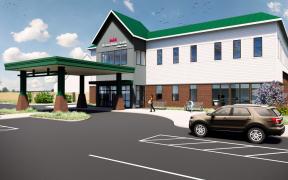Pelvic floor disorders are common and treatable. Conditions that pelvic medicine doctors treat include:
- Fecal incontinence: Loss of control of bowel movements
- Urinary incontinence: Loss of bladder control
- Painful bladder syndrome: Also called interstitial cystitis, painful bladder syndrome includes the need to urinate often, bladder pain and pelvic pain
- Recurrent urinary tract infection: Urinary tract infections that return after treatment
- Urethral stricture: Narrowing of the urethra (the tube that carries urine from the bladder out of the body)
- Pelvic floor prolapse: Pelvic organs drop from their normal place in the lower belly
What is pelvic medicine and pelvic reconstructive surgery?
Pelvic medicine and reconstructive surgery treats pelvic floor disorders, also called pelvic floor dysfunction (PFD). These conditions can happen with age or because of weakened, stretched or damaged pelvic muscles.
What are the symptoms of pelvic floor dysfunction?
The following symptoms may indicate that you have pelvic floor disorder (PFD). These symptoms also may be from other conditions. Talk to you doctor and get a complete physical exam.
- Needing to have several bowel movements in a short period of time
- Feeling like you cannot complete a bowel movement
- Constipation or straining with bowel movements
- Needing to urinate often - when you do go, you may stop and start many times
- Pain with urination
- Lower back pain
- Pain in the pelvic region, genitals or rectum
- Painful intercourse (for women)
Being obese, straining, childbirth and lifting heavy objects may be factors in pelvic floor disorders. These conditions affect the pelvic muscles so they do not work as they should.
Treating pelvic floor disorders
Pelvic floor disorder can be treated with physical therapy, medication and minimally invasive therapy. Talk to your doctor about the options, and which is best for you. You may be see a urologist, urogynecologist or other specialist for treatment.
The most common treatment for PFD is to work with a physical therapist using biofeedback. Your physical therapist also may recommend relaxation techniques that include warm baths, yoga and exercises.
A low-dose muscle relaxant sometimes is prescribed to deal with pelvic floor dysfunction.
Surgery is an option for pelvic floor disorders that do not get better with non-surgical treatment.
Primary care is your first stop for health care
Talk to your primary care provider if you have symptoms of pelvic floor dysfunction.































